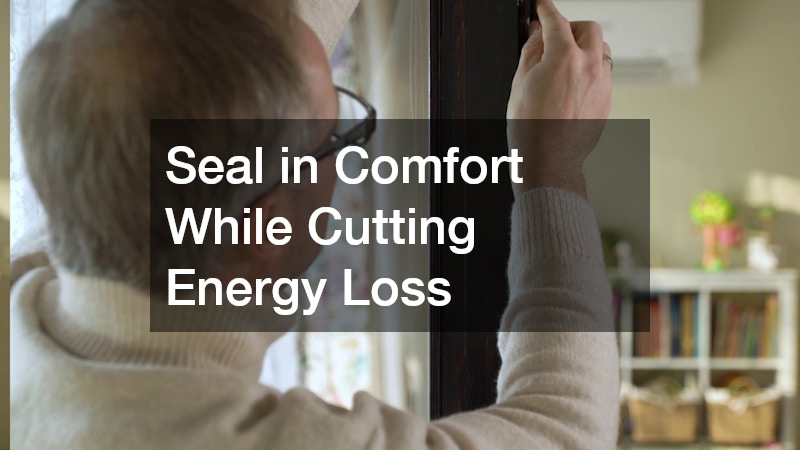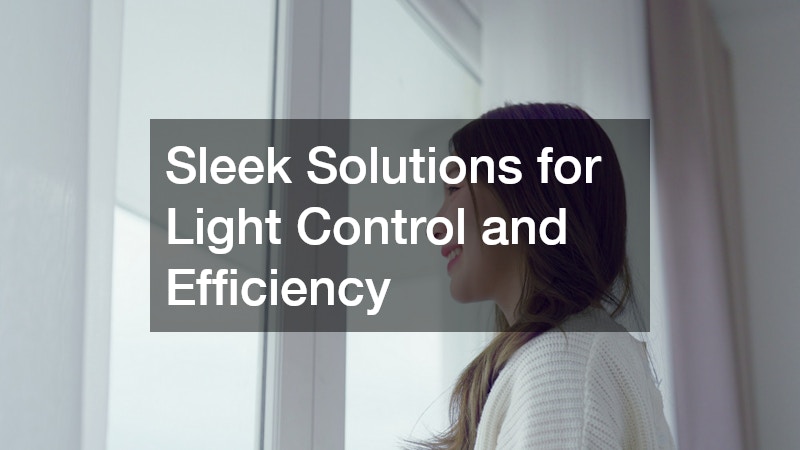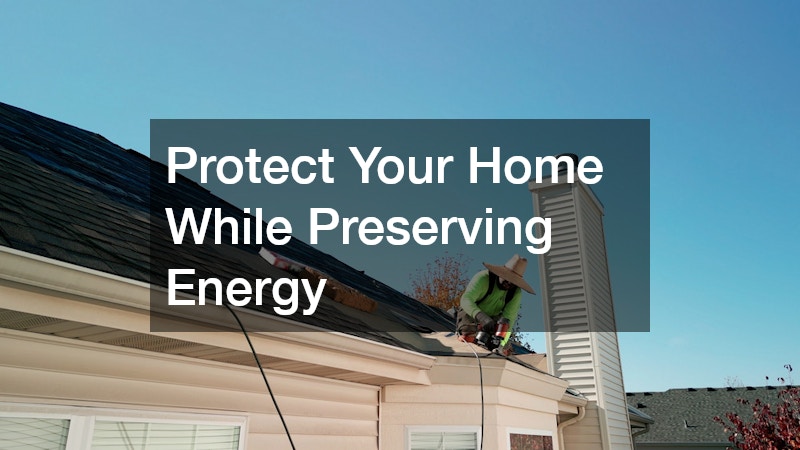The way we build, renovate, and maintain our homes has a direct impact on both our monthly bills and the environment. More homeowners are recognizing that creating a comfortable living space goes hand in hand with embracing sustainability features. These improvements not only reduce household energy and water usage but also enhance the value of a home while lessening its carbon footprint.
The shift toward greener living doesn’t require massive overhauls; instead, it often comes down to smart decisions in areas like heating, cooling, insulation, and lighting. Every choice—whether replacing old windows, repairing a leaky appliance, or investing in renewable energy—can help balance comfort with efficiency. Partnering with professionals such as HVAC and roofing experts ensures that each update is both effective and tailored to your home’s specific needs.
What’s more, homeowners have access to a variety of options that fit different budgets. For some, it may start with smaller changes, like installing new window coverings to manage heat and light. For others, the journey includes larger-scale updates, such as investments in geothermal energy or sourcing eco-friendly materials for their next home upgrade.
This guide explores some of the most effective strategies for creating an energy-smart home. Each section highlights how common updates, both big and small, translate into measurable savings, improved comfort, and lasting environmental benefits. By the end, you’ll have a clearer sense of how to choose the right upgrades and services to keep your home running efficiently while reducing waste.
Smarter Heating and Cooling for Every Season
Heating and cooling are often the largest contributors to a household’s energy use, which makes them a prime area for incorporating sustainability features. Outdated or inefficient systems can waste both money and energy, leaving your home less comfortable than it could be. The good news is that upgrading to high-efficiency systems can make a significant difference by improving comfort, reducing environmental impact, and lowering monthly expenses for families in nearly every type of home.
Working with a local HVAC company allows you to evaluate your current system and explore options like heat pumps, smart thermostats, or zoned heating and cooling. These technologies automatically adjust to your household’s needs, ensuring you use energy only when necessary. Many companies also offer energy audits, helping identify areas where your system may be working harder than it should, so you can make informed, cost-effective improvements.
Properly sized units, routine maintenance, and smart controls all work together to create consistent comfort with less energy use. Over time, these changes not only reduce your utility bills but also extend the lifespan of your HVAC system—making the investment pay off for years to come.

Seal in Comfort While Cutting Energy Loss
Even the most efficient heating and cooling systems can’t perform at their best if your home isn’t properly sealed and insulated. Gaps, drafts, and thin walls allow air to escape, forcing your HVAC system to work overtime. Adding or upgrading insulation is one of the most cost-effective sustainability features a homeowner can implement, providing long-term benefits for comfort, efficiency, and overall energy savings while helping protect the environment from unnecessary resource consumption.
By hiring an experienced insulation contractor, you can ensure your home maintains a consistent temperature year-round. Options include blown-in cellulose, spray foam, and fiberglass batts, each suited to different parts of the home. An expert can assess areas like attics, basements, and walls to recommend the best solution that balances performance, durability, and affordability for your household.
Good insulation not only lowers energy costs but also reduces noise and creates a more comfortable environment overall. When combined with air sealing, this improvement can significantly reduce a household’s carbon footprint without altering its appearance or requiring major renovations.
Upgrades That Brighten Spaces and Save Energy
Natural light is a free resource, and when harnessed properly, it can reduce reliance on artificial lighting and heating. Replacing outdated or leaky windows with modern, energy-efficient designs is a powerful way to integrate sustainability features into your home, improving both day-to-day comfort and long-term energy savings while creating a healthier living environment for your family.
Professional window replacement services offer a variety of options that improve insulation while maximizing natural light. Double- or triple-pane windows with low-emissivity coatings help keep heat in during the winter and out during the summer. This reduces the strain on your HVAC system while creating a brighter, more welcoming environment indoors, all while maintaining your desired aesthetic and complementing the overall design of your home.
In addition to efficiency benefits, new windows can also enhance curb appeal and increase property value. Many come with advanced locking systems and soundproofing qualities, making them both a practical and attractive upgrade that pays dividends for years through improved performance and reduced maintenance needs.

Sleek Solutions for Light Control and Efficiency
Managing the amount of sunlight that enters your home doesn’t just affect brightness—it directly impacts heating and cooling costs. Window treatments are often overlooked, but modern designs can serve as valuable sustainability features, offering both immediate comfort and long-term savings for households focused on energy efficiency and environmental responsibility.
For example, modern roller shades allow homeowners to precisely control natural light and heat gain. Some varieties are made with eco-friendly fabrics that filter light while blocking harmful UV rays, protecting both your home’s interior and your energy budget. Automated shades can even be programmed to adjust with the sun’s position, keeping your home cooler during hot afternoons and warmer during cold mornings, without requiring constant manual adjustments or expensive upgrades.
This simple yet stylish solution reduces the need for artificial lighting and keeps temperatures stable, demonstrating how small changes can have a big impact on energy efficiency while also enhancing your home’s overall appearance and livability.
Keep Your Home Running Without Wasting Energy
Appliances play a significant role in how efficiently a home operates. When they aren’t working properly, they can consume more energy and water than necessary. Investing in timely appliance repair is one of the most practical sustainability features a homeowner can adopt, helping families save money, reduce waste, and maintain a more environmentally conscious lifestyle without sacrificing convenience or performance.
Instead of replacing a malfunctioning dishwasher, refrigerator, or washing machine, a skilled technician can often restore it to peak efficiency. This prevents waste while extending the lifespan of your appliances. Many repairs are surprisingly affordable compared to the cost of replacement, and they keep old units from ending up in landfills, where they can contribute to pollution and resource depletion.
Regular maintenance—such as cleaning refrigerator coils or ensuring washing machines are properly balanced—also helps appliances operate with less strain, lowering your household’s utility costs while minimizing environmental impact, making it an easy and highly effective step toward a more sustainable home.

Fixes That Prevent Leaks and Lower Water Costs
Water is a valuable resource, and even small leaks can waste hundreds of gallons over time. Beyond the environmental cost, unnoticed leaks often lead to higher utility bills and potential property damage. Incorporating sustainability features into your plumbing system begins with regular plumbing repairs, which protect both your home and the environment while offering peace of mind that essential resources aren’t being wasted unnecessarily.
Whether it’s fixing a dripping faucet, sealing a leaky pipe, or upgrading to low-flow fixtures, these small adjustments add up to significant savings. Modern plumbing solutions are designed to use less water without sacrificing performance, helping households reduce their environmental footprint and ensuring long-term comfort and reliability.
Hiring a professional ensures that underlying issues are caught early, preventing costly repairs down the road. A properly maintained plumbing system not only conserves water but also supports the overall efficiency of your home, making it one of the smartest and most impactful improvements a homeowner can undertake.
Power Your Home Safely and Efficiently
Electricity is the backbone of modern living, but inefficiencies in your electrical system can drive up energy costs and pose safety risks. Adding sustainability features to your home’s wiring and electrical systems often requires the expertise of a local electrician, who can identify hidden problems and recommend upgrades that balance safety, efficiency, and long-term cost savings for homeowners.
From installing energy-efficient lighting to upgrading breaker panels for renewable energy compatibility, electricians play a crucial role in creating safe and sustainable homes. Smart switches, motion-sensor lighting, and LED upgrades are just a few examples of improvements that combine convenience with lower consumption, making them excellent investments for both immediate comfort and future property value.
An electrician can also recommend surge protection and proper grounding, which not only improves efficiency but also safeguards your appliances and devices from unexpected power fluctuations, helping prevent costly damage while ensuring your household runs smoothly year-round.
Tap into the Earth for Long-Term Savings
For homeowners ready to make a larger investment in sustainability, renewable energy solutions offer lasting rewards. Among the most promising options is geothermal well drilling, which uses the steady temperature of the earth to heat and cool your home.
Geothermal systems stand out as some of the most impactful sustainability features available. Unlike traditional HVAC systems, they don’t rely on fossil fuels and require significantly less energy to maintain indoor comfort. While the upfront costs can be higher, the long-term savings and minimal environmental impact make geothermal systems a worthwhile investment.
Partnering with experienced professionals ensures the system is installed correctly and tailored to your property’s unique needs. Over time, this approach provides consistent comfort, reduced bills, and a smaller carbon footprint.

Protect Your Home While Preserving Energy
Your home’s roof is more than a shield from the elements—it’s a critical component of energy efficiency. Poorly insulated or damaged roofs are responsible for significant heat loss, which increases reliance on heating and cooling systems. Adding or upgrading your roof with sustainability features can dramatically improve efficiency, helping your household stay comfortable year-round while lowering utility expenses and reducing the environmental footprint associated with excessive energy use.
Working with a skilled roofing contractor ensures your home’s roof is properly sealed, insulated, and made with durable, eco-friendly materials. Options like reflective shingles, green roofing systems, and improved underlayment help regulate indoor temperatures and extend the life of the structure, providing excellent value over time while supporting long-term sustainability goals for your property.
A well-maintained roof not only reduces energy bills but also protects your home from moisture damage, preserving both your comfort and your investment, while offering peace of mind that your home is secure, efficient, and environmentally responsible.
Find the Right Materials for Green Updates
Every successful home improvement project begins with the right materials. Sourcing supplies from a building supply store that prioritizes sustainability features allows homeowners to make eco-friendly choices from the very start.
From recycled wood to energy-efficient windows and low-VOC paints, the right materials can transform a home into a healthier, more sustainable space. Many supply stores now stock products that meet green certifications, making it easier for homeowners to align their projects with eco-conscious goals.
By working with knowledgeable staff, you can ensure that your updates not only meet design and durability standards but also reduce environmental impact.
Creating a greener home doesn’t require sacrificing comfort or style—in fact, the opposite is true. Embracing sustainability features makes your living space more enjoyable while lowering costs and supporting the environment. From consulting experts in climate control to electricians, each decision plays an important role in your home’s performance.
Small updates, such as installing modern roller shades or fixing faulty appliances, can yield noticeable savings almost immediately. Larger commitments, like geothermal well drilling or a new roof, deliver long-term benefits that pay off for decades. Whether you’re sealing your home or addressing leaky pipes, every step contributes to a more sustainable lifestyle.
Building a more efficient home is a journey made up of practical choices. By focusing on both immediate fixes and forward-thinking upgrades, homeowners can enjoy reduced utility bills, improved comfort, and the peace of mind that comes with living more sustainably. The best part? Each improvement you make today sets the foundation for a healthier, more cost-effective, and environmentally responsible tomorrow.



